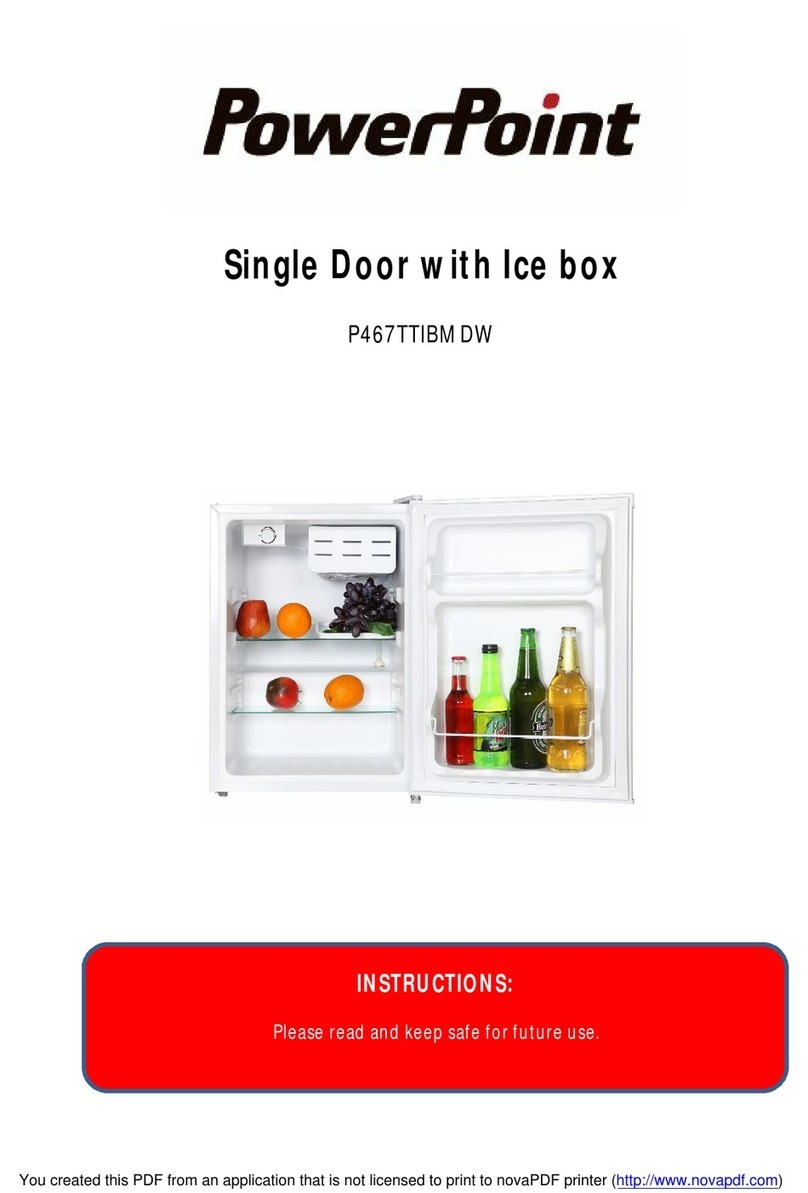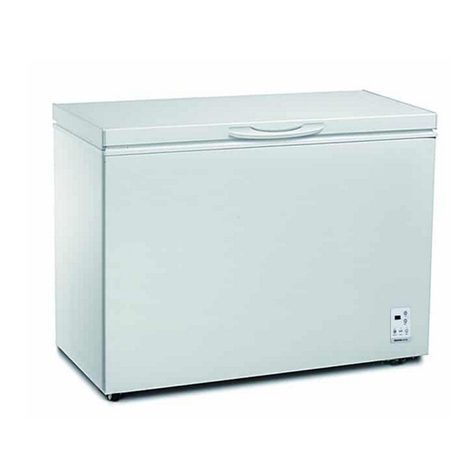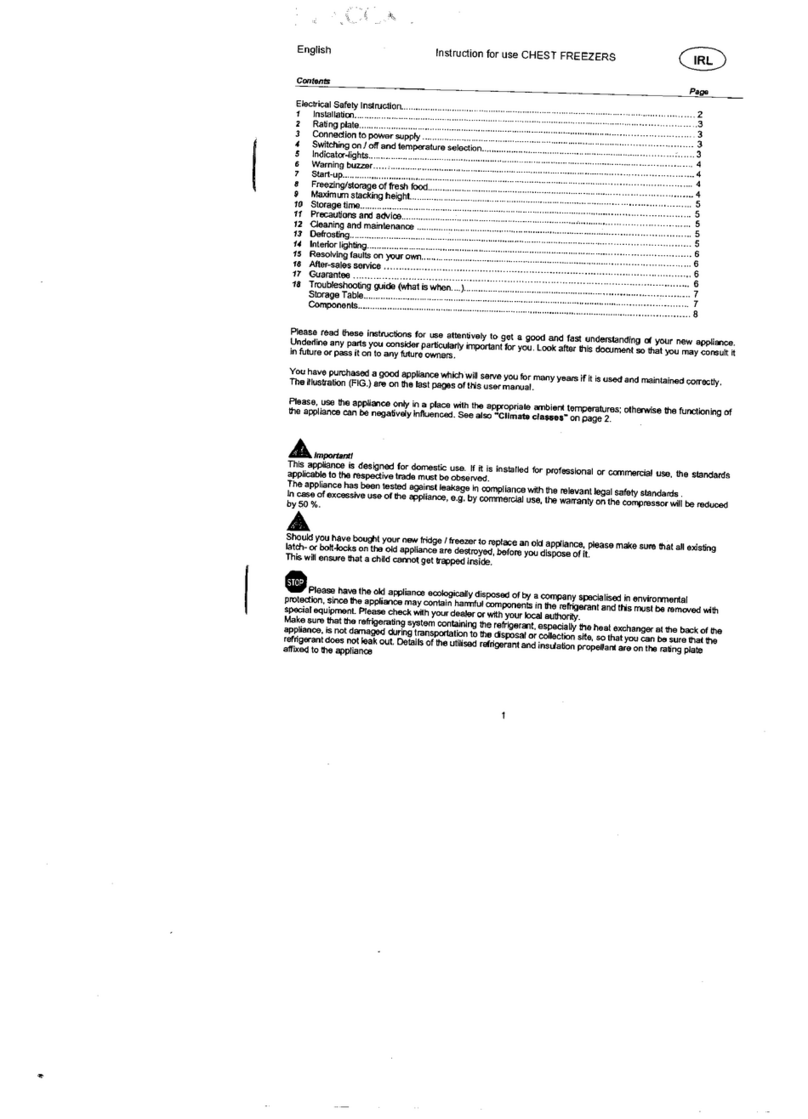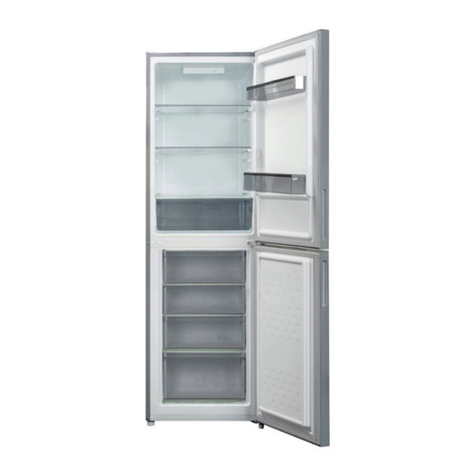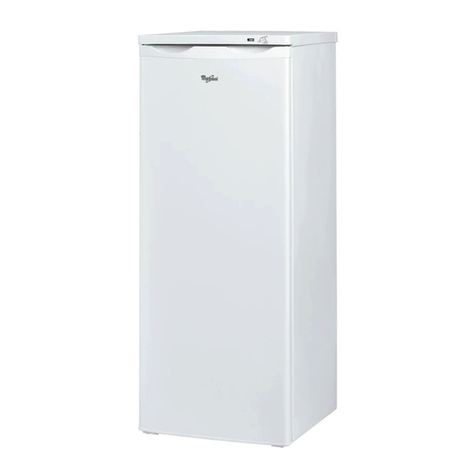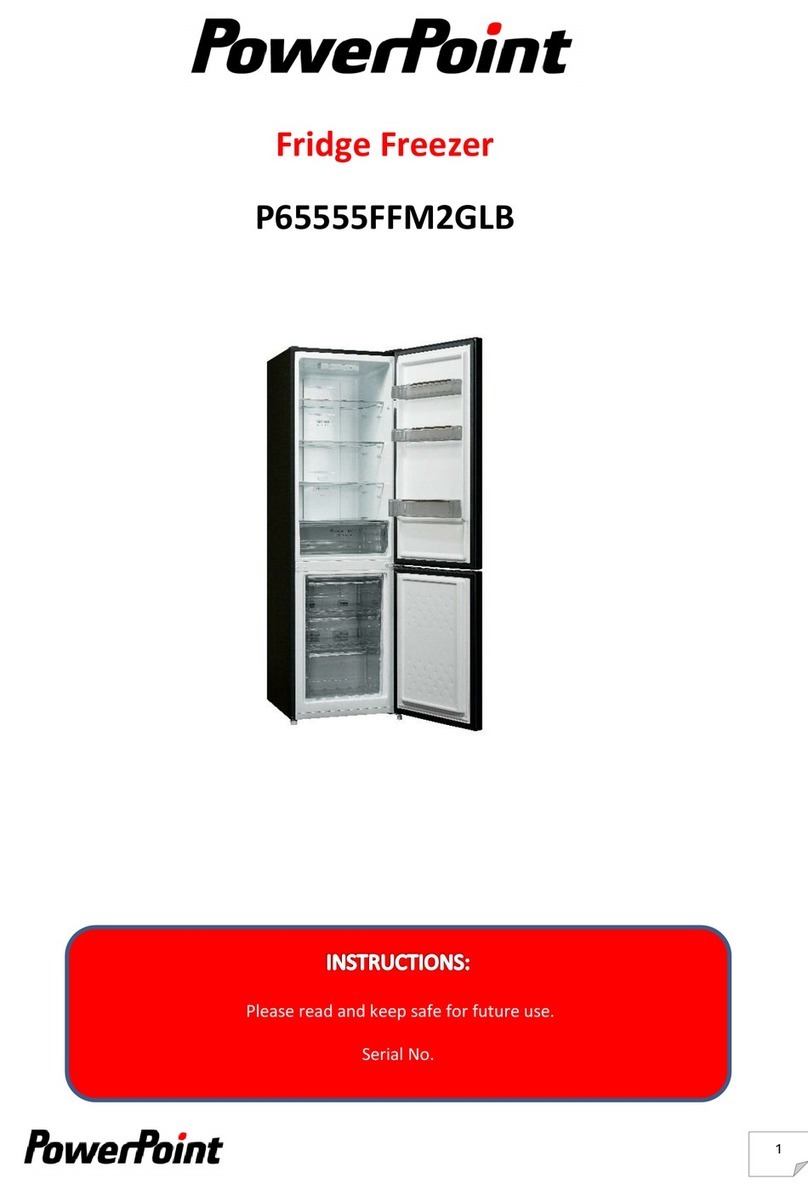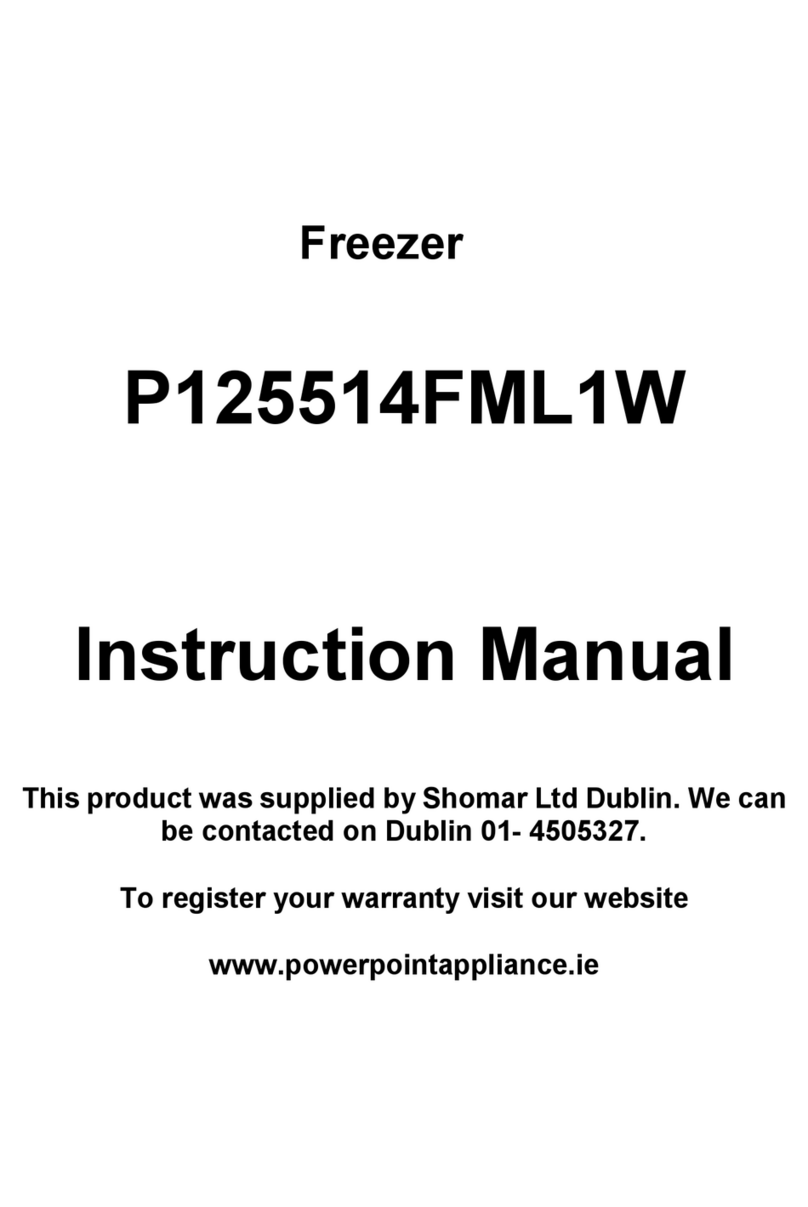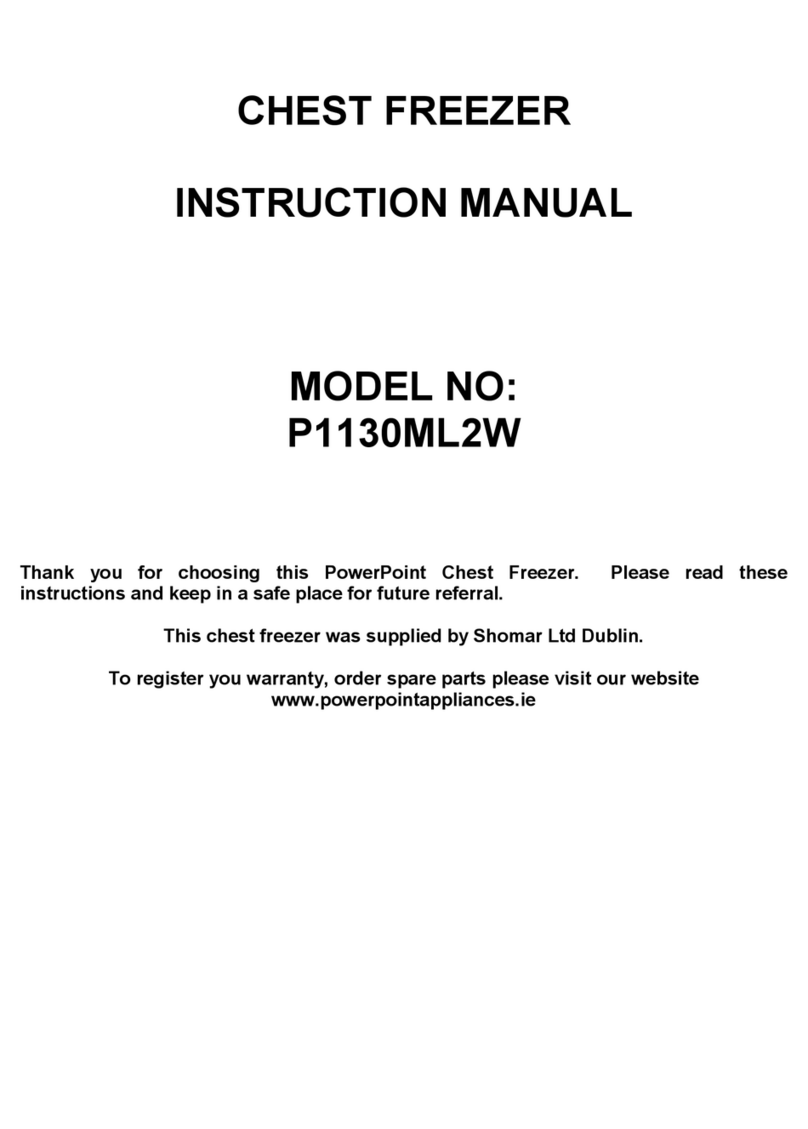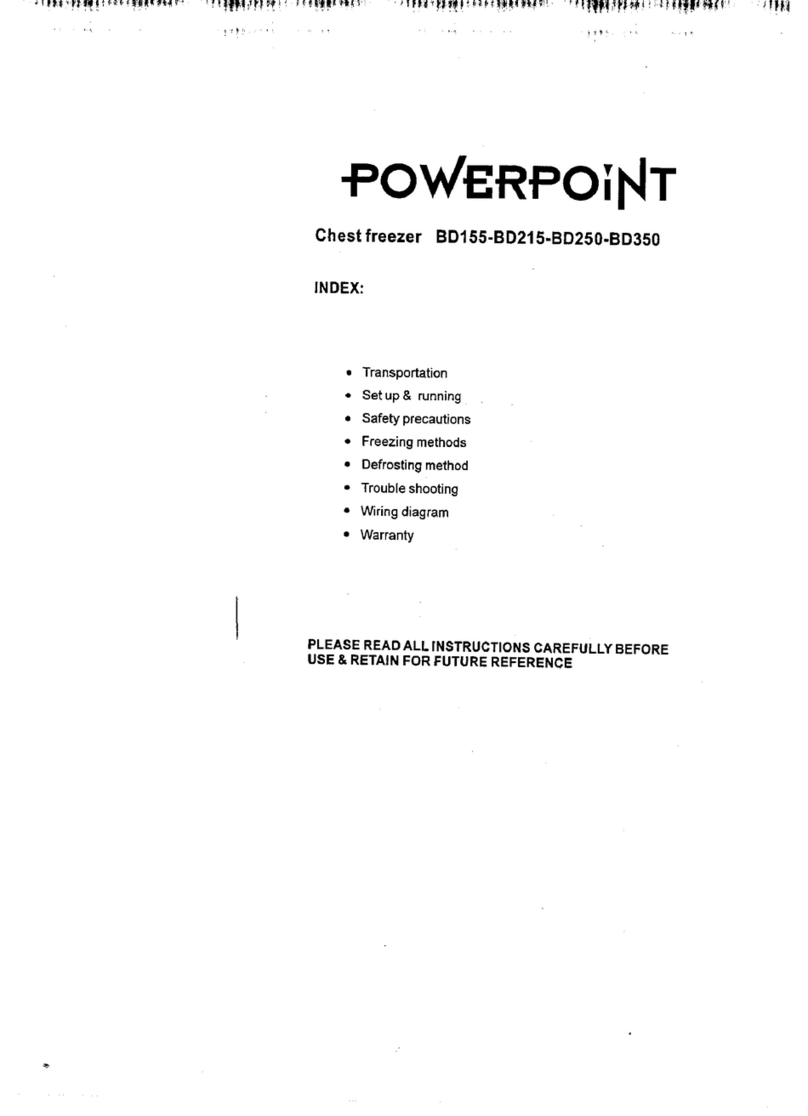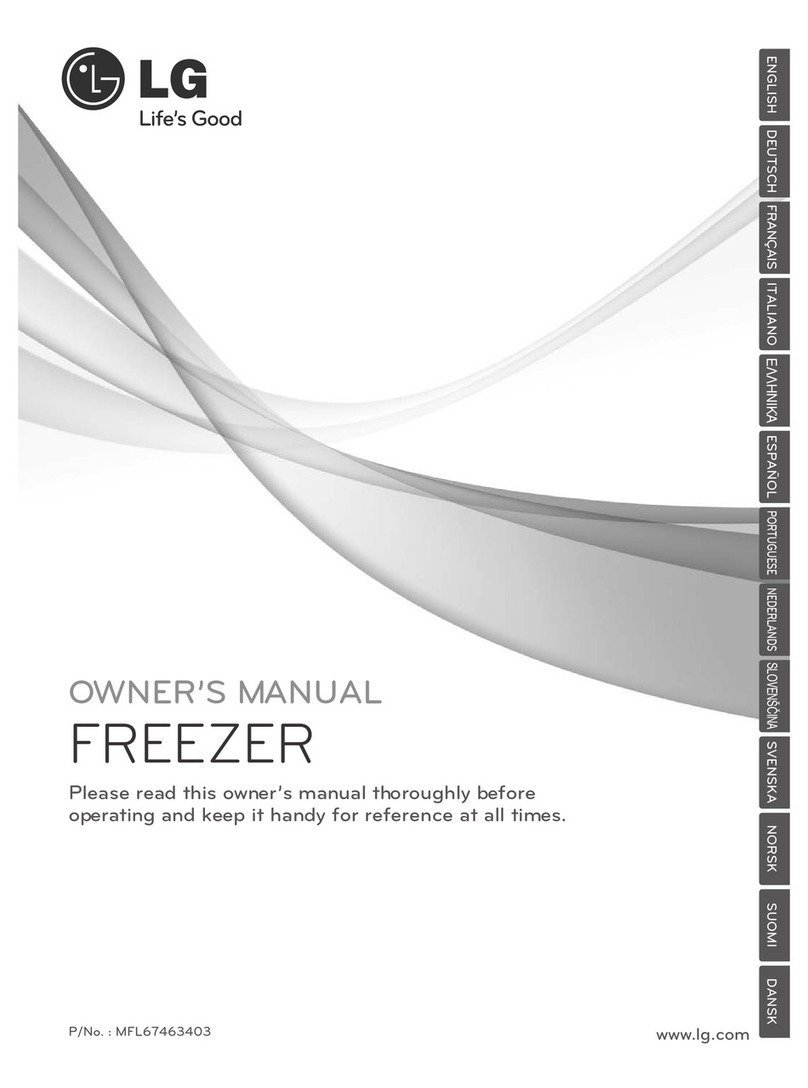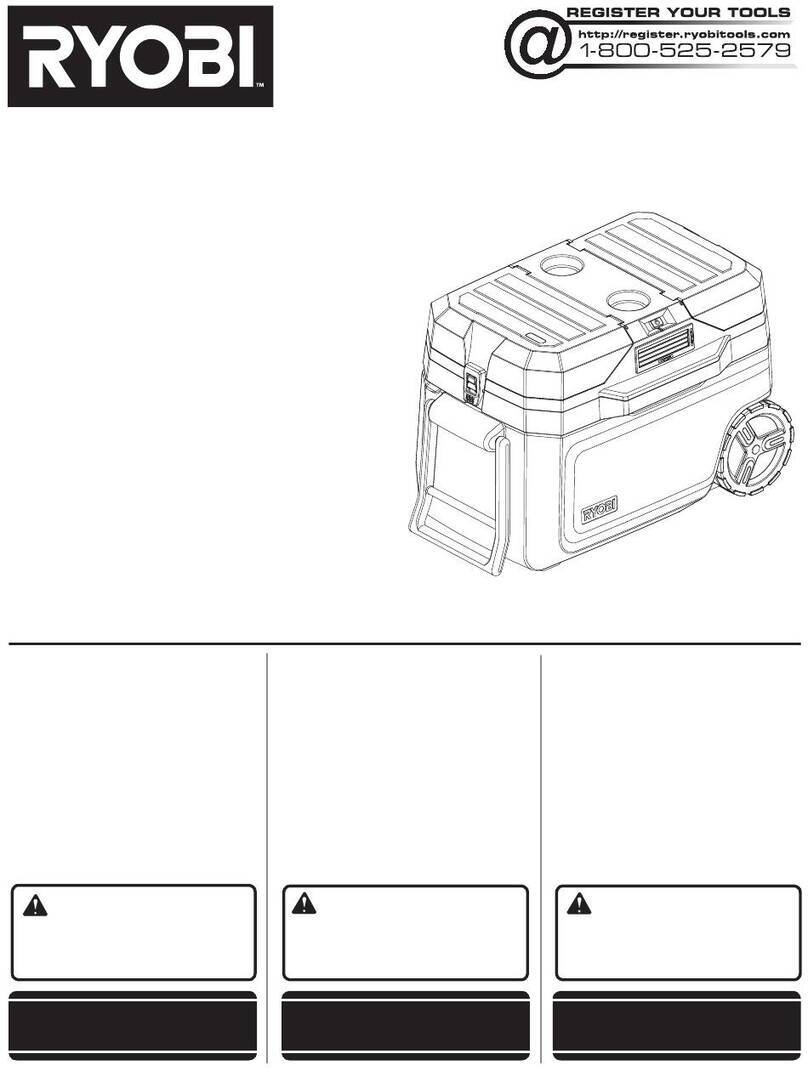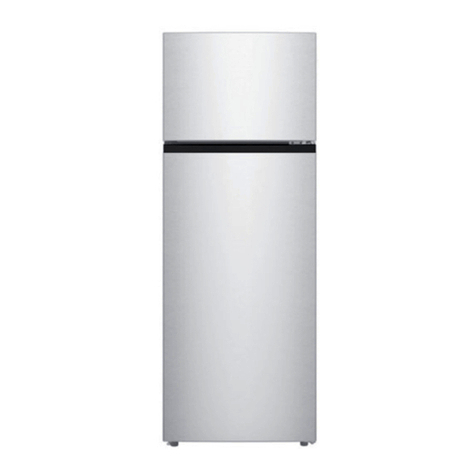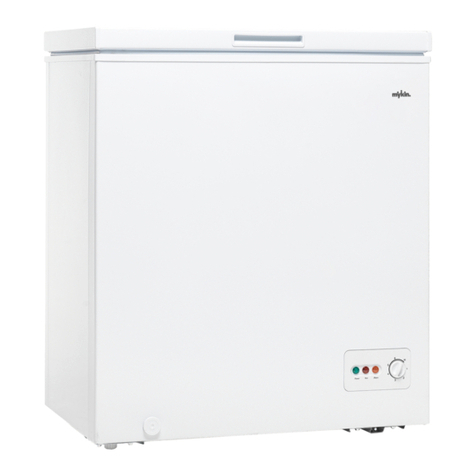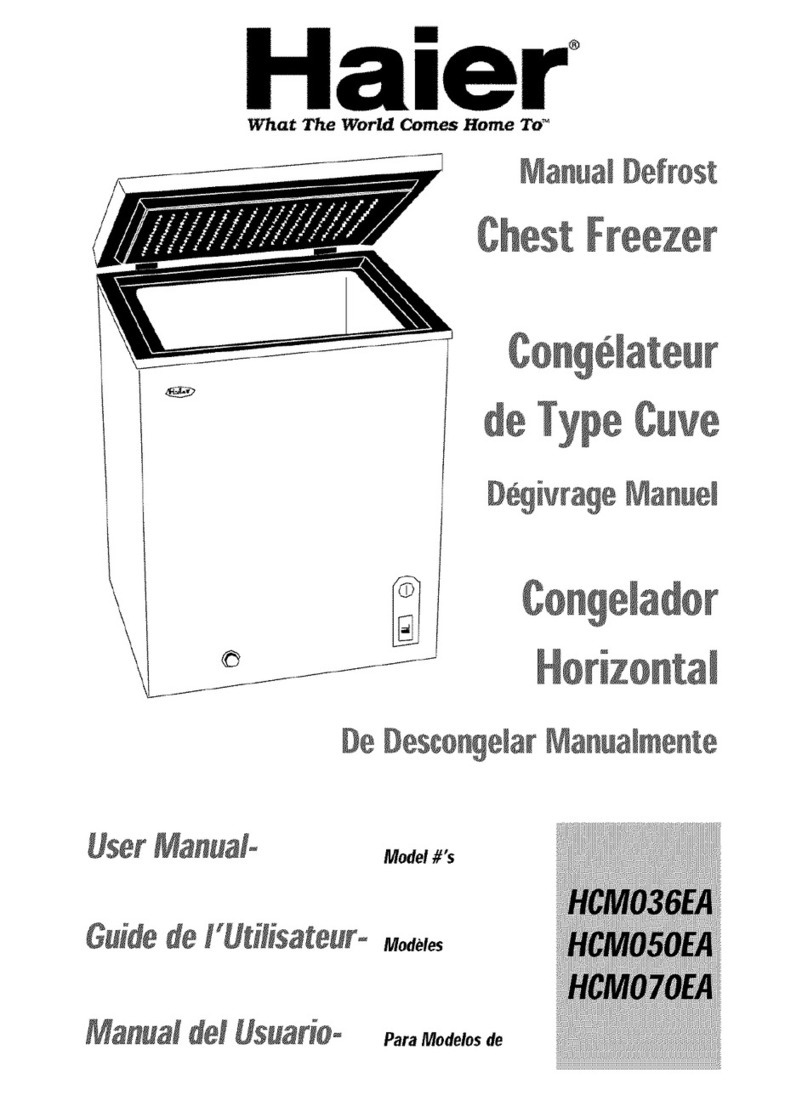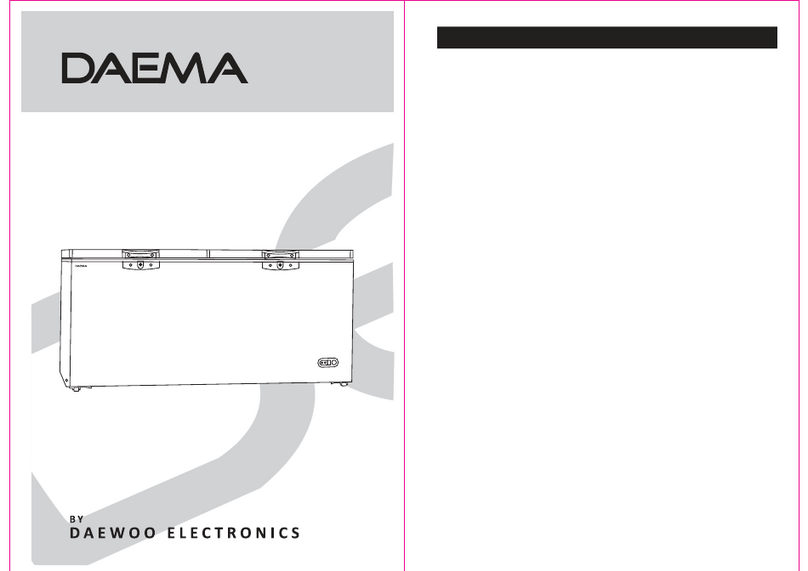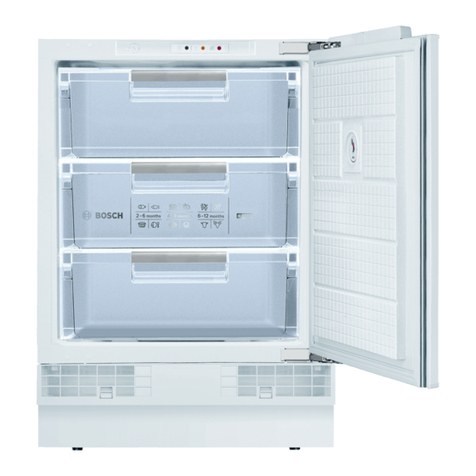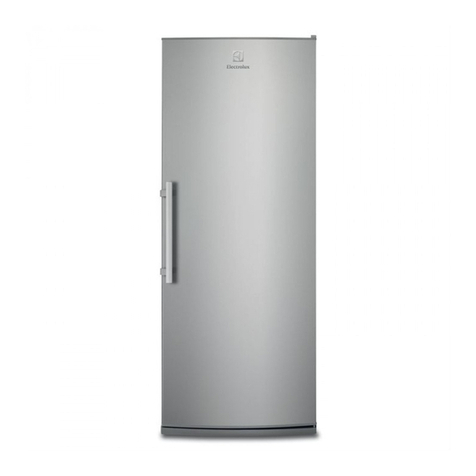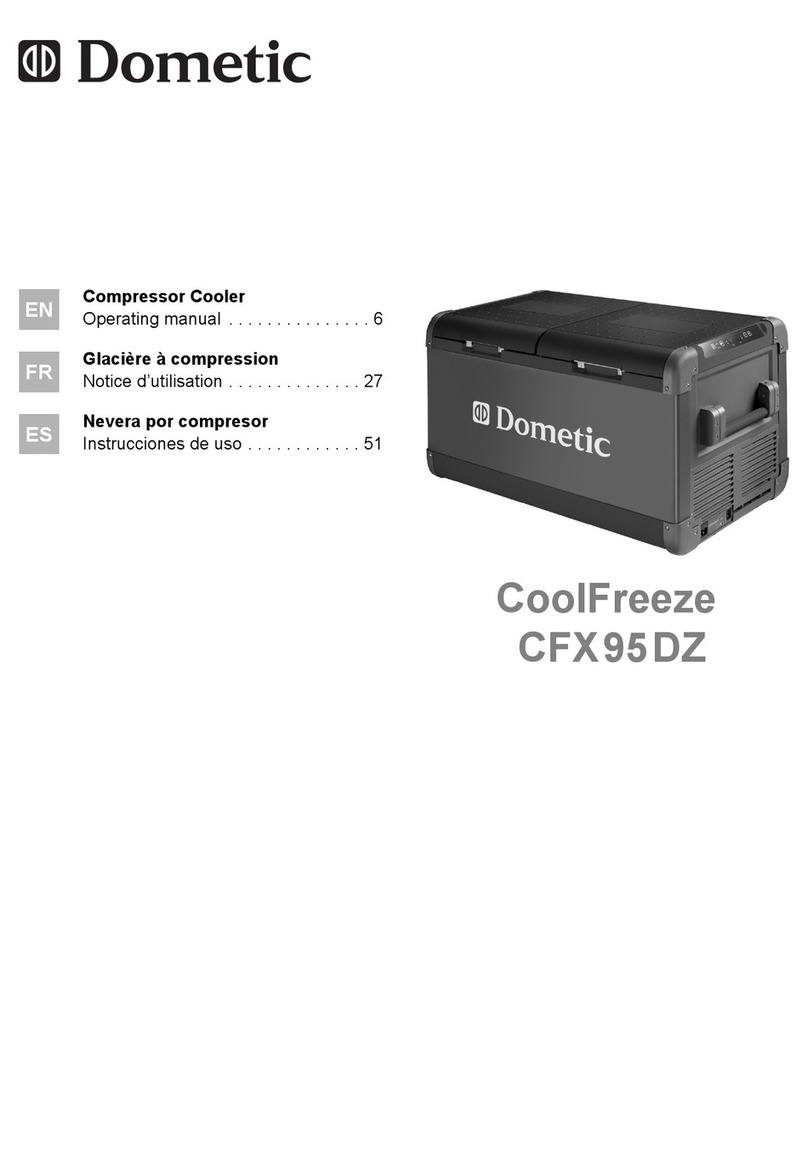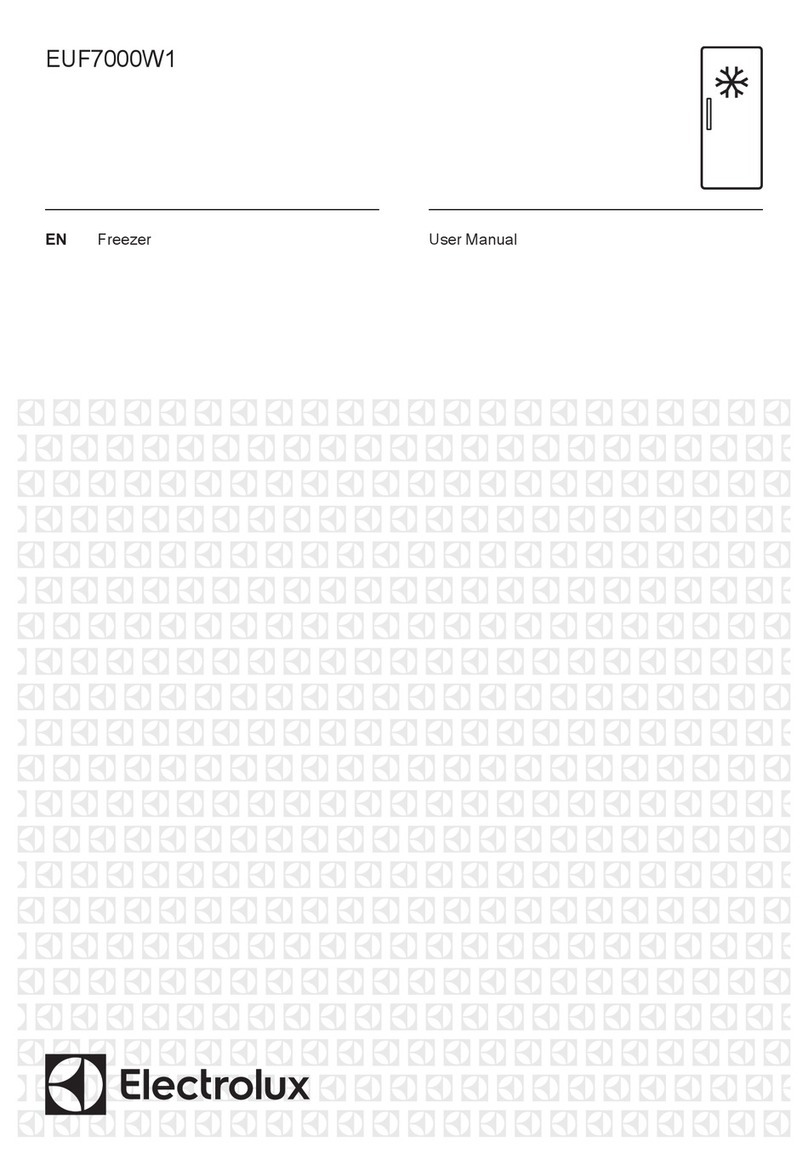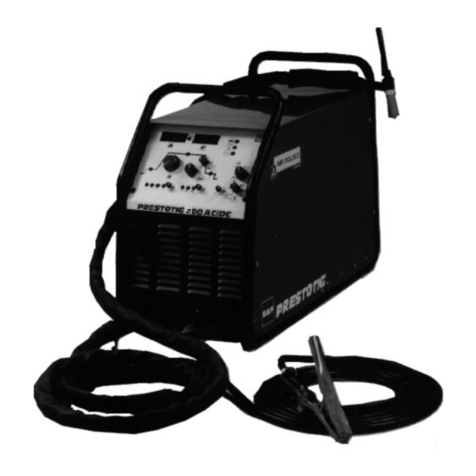
• For EN standard: This appliance can be used
by children aged from 8 years and above and
persons with reduce physical sensory or
mental capabilities or lack of experience and
knowledge if they have been given
supervision or instruction concerning use of
the appliance in a safe way and understand
the hazards involved. Children shall not play
with the appliance. Cleaning and user
maintenance shall not be made by children
without supervision. Children aged from 3 to 8
years are allowed to load and unload
refrigerating appliances.
• The necessity that, for doors or lids fitted with
locks and keys, the keys be kept out of the
reach of children and not in the vicinity of the
refrigerating appliance, in order to prevent
children from being locked inside.
• To avoid food contamination, please respect
the following instructions:
- Opening the door for long periods can cause a
significant increase of the temperature in the
compartments of the appliance.
- Clean regularly surfaces that can come in
contact with food and accessible drainage
systems.
- Clean water tanks if they have not been used
for 48 h; flush the water system connected to
a water supply if water has not been drawn for
5 days. (Note 1)
- Store raw meat and fish in suitable containers
in the refrigerator, so that it is not in contact
with or drip onto other food.
- 4 star frozen-food compartments are suitable
for storing pre-frozen food, storing or making
ice-cream and making ice cubes. (note 2)
- One-, two- and three-star compartments are
not suitable for the freezing of fresh food.
(Note 3)
- For appliances without a 4-star compartment:
this refrigerating appliance is not suitable for
freezing foodstuffs. (Note 4)
- If the refrigerating appliance is left empty for
long periods, switch off, defrost, clean, dry,
and leave the door open to prevent mould
developing within the appliance.
Note 1,2,3,4: Please confirm whether it is
applicable according to your product
compartment type.
• FOR a freestanding appliance: this
refrigerating appliance is not intended to be
used as a built-in appliance.
• ANY replacement or maintenance of the LED
lamps is intended to be made by the
manufacturer, its service agent or similar
qualified person.
This manual contains important safety
information and should read fully and
kept safely for future reference.
This is a prohibition symbol.
Any incompliance with instructions marked
with this symbol may result in damage to the
product or endanger the personal safety of the
user.
This is a warning symbol.
It is required to operate in strict observance of
instructions marked with this symbol; or
otherwise, damage to the product or personal
injury may be caused.
This is a cautioning symbol.
Instructions marked with this symbol require
special caution Insufficient caution may result
in slight or moderate injury, or damage to the
product.
1. SAFETY WARNINGS
5/20
1.2 Meaning of safety warning
symbols



